Is Moissanite a Fake Diamond?
When selecting a gemstone for an engagement ring or fine jewelry, a common question arises: Is moissanite a fake diamond? The reality isn’t that straightforward. Moissanite is a beautiful lab-grown gemstone that shares some features with diamonds but also has distinctive qualities of its own. Known for its exceptional brilliance, durability, and affordability, moissanite stands out as an ethical and budget-friendly alternative to traditional diamonds.
In this article, we’ll delve into what moissanite truly is, the process behind its creation, and how it stacks up against natural and lab-grown diamonds. By the end, you’ll gain a deeper insight into moissanite’s unique value and be better equipped to decide if it’s the right choice for your jewelry needs. We’ll clear up the myths, present the facts, and highlight key differences to help you make a confident and informed decision for your next jewelry purchase.
Table of Contents
▼What Excatly Is Moissanite? Is Moissanite A Fake Diamond

How is Moissanite Made?

Moissanite is made in laboratories using advanced techniques that replicate the natural formation process. The primary method is the (HPHT) process. During this process, silicon and carbon are combined under extreme heat (about 2,500 to 3,600°F) and high pressure (5 to 10 gigapascals). This environment mimics the conditions under which natural moissanite forms, such as during meteorite impacts or volcanic activity. The result is a durable and brilliant gemstone with the same chemical and physical properties as natural moissanite. Because it’s lab-created, moissanite is also more ethical, sustainable, and readily available than its rare natural counterpart.
Difference Between Natural and Lab-Grown Moissanite

While natural and lab-created moissanite share many of the same properties, they differ in several other key aspects.
- Rarity
Natural moissanite forms under very specific and rare conditions, making it incredibly scarce. In contrast, lab-grown moissanite is produced using advanced technology, ensuring a consistent and readily available supply.
- Appearance
Natural moissanite often contains inclusions, though this doesn’t diminish its brilliance or fire. Lab-created moissanite, however, tends to have fewer inclusions and can be crafted in a range of colors, offering more variety.
- Cost
Due to its scarcity, natural moissanite is significantly more expensive than lab-grown versions, which are more affordable to produce.
- Environmental Impact
Mining natural moissanite can lead to significant environmental damage. On the other hand, lab-grown moissanite is a more sustainable and eco-friendly option since it doesn’t require mining.
Key Properties That Make Moissanite Unique And Not Fake Diamond
Moissanite is quite durable, scoring 9.25 on the Mohs hardness scale, so it can withstand regular wear. Unlike diamonds, moissanite is always lab-created, ensuring it is conflict-free and eco-friendly. Moreover, it does not lose its sparkle or change color over time. For these reasons, moissanite is considered a good choice for people looking for a durable and affordable gemstone.
Brilliance and Sparkle of Moissanite And Diamond
How Hard is Moissanite Compared to Diamond?

Diamonds are renowned as the hardest naturally occurring material, achieving a perfect 10 on the Mohs hardness scale. This exceptional hardness makes diamonds incredibly resistant to scratches, ensuring they can endure a lifetime of daily wear and remain pristine.
Moissanite, while slightly lower on the scale at 9.25, still boasts impressive durability and resilience. This hardness level means moissanite can withstand daily wear and tear remarkably well, making it a practical choice for engagement rings and other fine jewelry. Compared to other gemstones, such as cubic zirconia, which scores an 8, moissanite is significantly stronger and maintains its brilliance and clarity over time without clouding or wearing down.
Additionally, moissanite offers superior brilliance and fire compared to many other gemstones, ensuring lasting sparkle. For those seeking a durable, beautiful, and cost-effective option, moissanite stands out as a reliable and ethical alternative to diamonds, offering exceptional value without compromising on quality or longevity.
Composition and Structure of Natural Diamonds
Diamonds are made entirely of carbon atoms arranged in a crystal structure. This structure gives diamonds their hardness, which makes them resistant to scratches and damage. Natural diamonds form under extreme heat and pressure deep within the Earth over a long time. While natural diamonds are mined, lab-grown diamonds are created using advanced technology. Despite their different origins, both types have the same physical and chemical properties. Diamonds’ unique structure allows them to reflect light, making them a popular choice for jewelry.
Moissanite Vs Diamond : Property Comparisons

Types of Moissanite and Diamond
Types of Moissanite:
Classic Moissanite:
This is the traditional version of moissanite, which has a light yellow color and is used for engagement rings.
Forever One Moissanite (Colorless):
This is modern moissanite that is completely colorless and is equivalent to D-F grade.
Forever One Moissanite:
It has a light warm tone and falls in the G-H-I range with a slightly warm undertone.
Colored Loose Moissanite:
It is available in bright colors like green, blue, and pink and is popular for those who like unique designs.
Types of Diamonds:
Natural Diamonds:
These diamonds are formed due to extreme pressure and temperature inside the earth and are extracted through mining.
Lab-Grown Diamonds:
These diamonds are created in a laboratory and look exactly like natural diamonds, but their manufacturing process is artificial.
Coloured Diamonds:
These diamonds come in vibrant colors like yellow, pink, blue, green, etc. due to their chemical impurities or structural variations.
Synthetic Diamonds:
These are man-made diamonds that are created in a laboratory but look slightly different from naturally occurring diamonds.
Both the gemstones have their own unique charm, but the types of moissanite and diamond show variations in terms of cut and quality.
Is moissanite a fake diamond?
So far we have learned about natural moissanite and lab-made moissanite. Next, in the second part, we discussed the difference between diamond and moissanite. This makes it clear that moissanite is a natural gemstone in itself, but it is found in very small quantities in nature. Apart from this, it looks exactly like a diamond; perhaps that is why it has been given the tag of synthetic diamond. But there are many differences between it and diamond, except for appearance. It is used more as an alternative to diamond because it provides almost the same beauty at a lower cost than diamond.
Answer
A moissanite is not a fake or cheap diamond, but it is a low-cost alternative to diamond.
How to check originality of Moissanite
The table given below will help you to spot the difference between real and fake moissanite
|
Criteria |
Real Moissanite |
Fake Moissanite |
|
Brilliance & Fire |
Very bright, rainbow-like flashes due to high refractive index (2.65 – 2.69) |
Less intense shine, fewer colorful flashes |
|
Hardness |
9.25 on the Mohs scale, highly scratch-resistant |
Lower hardness, prone to scratches and losing shine |
|
Weight |
Lighter compared to fake stones of similar size |
Heavier than real moissanite |
How to check
Brilliance and fire.
- Observe Under Natural Light
- Use a magnifying glass or loupe (10x).
- Compare with a Diamond
- Use an LED or flashlight test.
Hardness
- Scratch test using Mohs scale
- Use professional tools like a diamond tester.
- A fake one will show scratches if worn daily.
Conclusion
In conclusion, moissanite is not a fake or cheap diamond, but a genuine gemstone with its own unique beauty and properties. While it shares similarities with diamonds in appearance, it stands out due to its higher brilliance, double refraction, and lower cost. Moissanite offers an excellent alternative for those seeking diamond-like qualities without the hefty price tag. However, it’s important to be aware of fake moissanite on the market, which lacks the durability and brilliance of real moissanite. By understanding the differences and testing for authenticity, buyers can confidently invest in real moissanite jewelry.

.png?v=74971505631319126241739980080)

.png?v=170379015109479064061739980109)
 Solitaire Ring
Solitaire Ring
 Accent Ring
Accent Ring
 Halo Ring
Halo Ring
 Bridal Set
Bridal Set
 Toi-Moi Rings
Toi-Moi Rings
 Three Stone Ring
Three Stone Ring
 Vintage Ring
Vintage Ring
 Bezel Set
Bezel Set
 Channel Set
Channel Set
 Dainty Band
Dainty Band
 Eternity Band
Eternity Band
 Studs and Earrings
Studs and Earrings
 Bracelet
Bracelet
 Necklace
Necklace
 Men's jewelry
Men's jewelry
 Ready to Dispatch
Ready to Dispatch
 Brilliant
Brilliant
 Old Cut
Old Cut
 Step Cut
Step Cut
 Matching Pair
Matching Pair
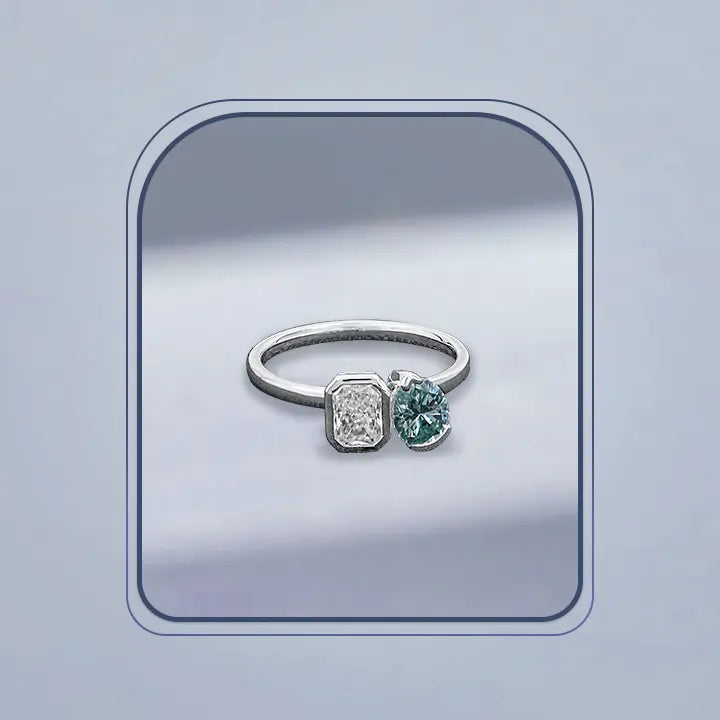
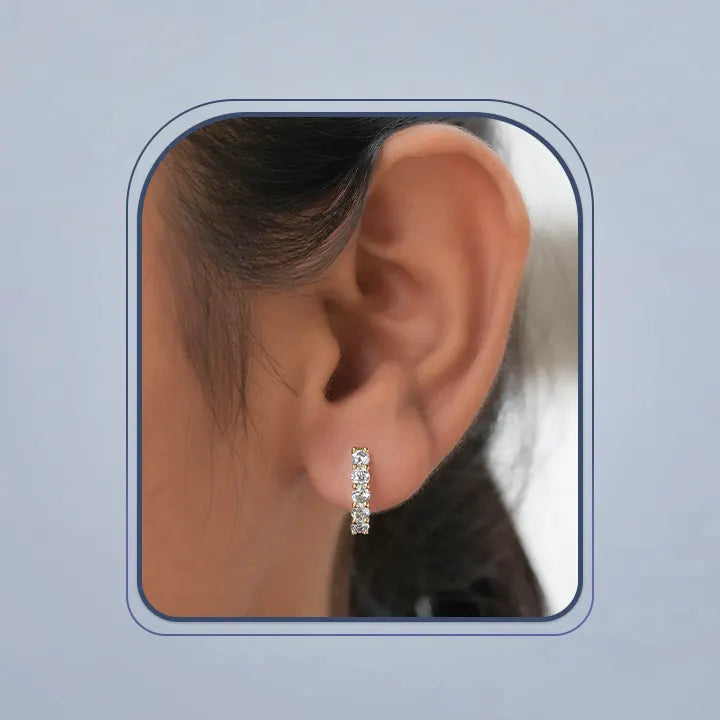
 Five Stone Ring
Five Stone Ring
 Pave band
Pave band
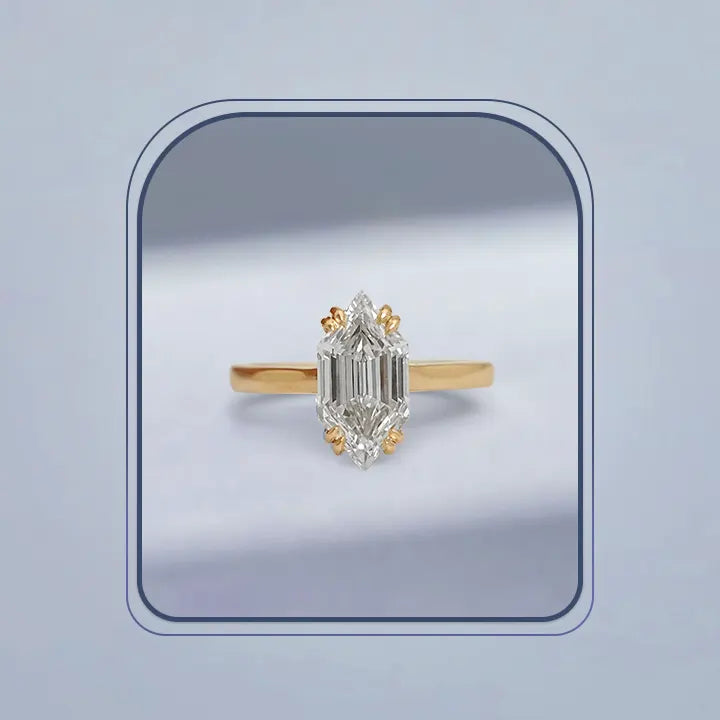
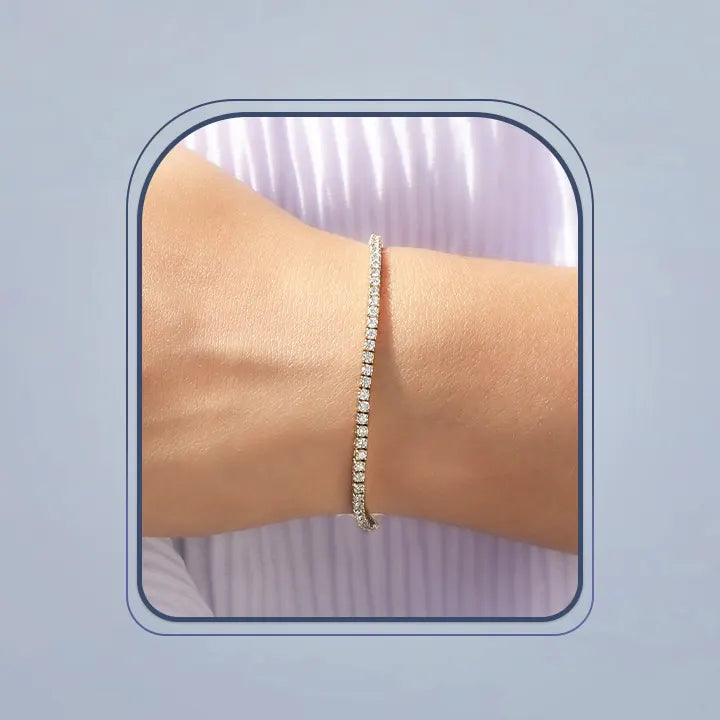
![[Theme]- red and black,[Background]- black grass, [main element]- red colored moissanite stone, [Text]- Is Moissanite a Fake Diamond](http://www.goldenbirdjewels.com/cdn/shop/articles/main_banner_2048X1024_2.webp?v=1728361164&width=5000)
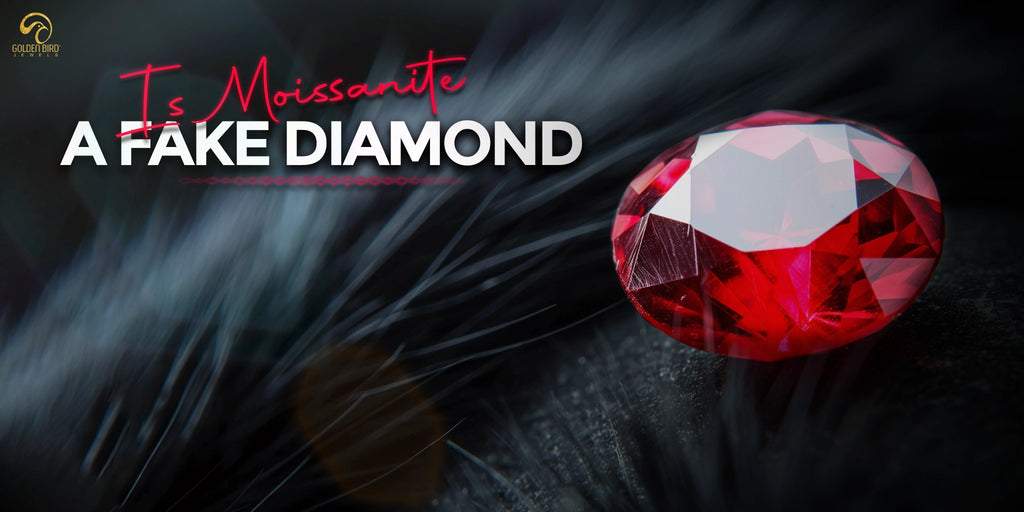










![[Which hand to wear a promise ring]-[Goldenbird Jewels]](http://www.goldenbirdjewels.com/cdn/shop/articles/Which_hand_to_wear_a_promise_ring_1024x1024.webp?v=1735388893)
